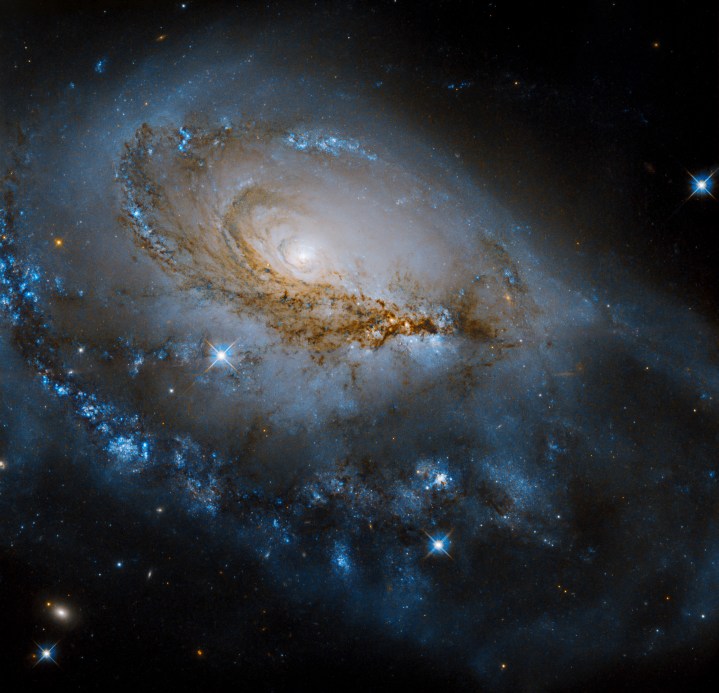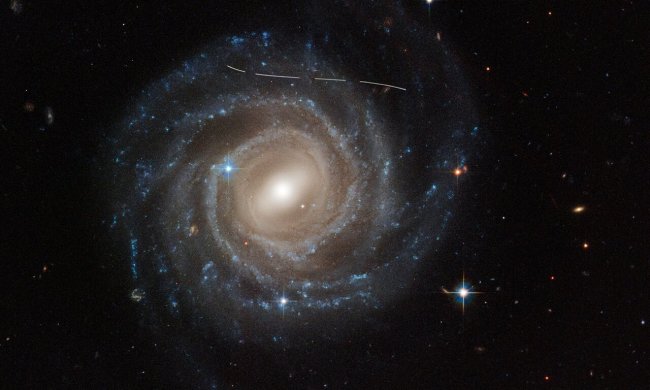Another stunning image of the wonders of space was shared this week by researchers using the Hubble Space Telescope. This Hubble image shows the galaxy NGC 1961, its spiral arms reaching out into the darkness and swirling around its bright and busy center. The galaxy is located 180 million light-years away, in the constellation Camelopardalis, or the Giraffe. This lesser-known constellation is visible from the northern hemisphere and is large but faint.
This particular galaxy is notable for its active galactic nucleus, which is the very bright region at its heart. Active galactic nuclei or AGNs are targets of study because they are brighter than can be explained by the presence of stars there, with large amounts of radiation being produced as material falls into the supermassive black hole at their centers.

“NGC 1961 is an intermediate spiral and an AGN, or active galactic nuclei, type of galaxy,” Hubble scientists explain. “Intermediate spirals are in between “barred” and “unbarred” spiral galaxies, meaning they don’t have a well-defined bar of stars at their centers. AGN galaxies have very bright centers that often far outshine the rest of the galaxy at certain wavelengths of light. These galaxies likely have supermassive black holes at their cores churning out bright jets and winds that shape their evolution. NGC 1961 is a fairly common type of AGN that emits low-energy-charged particles.”
Even though black holes themselves are invisible because they absorb light that comes close to them, the regions immediately around the black hole can glow brightly. As dust and gas swirl around the black hole in a structure called an accretion disk, the particles of dust and gas rub together and increase in temperature. These accretion disks can reach very high temperatures, even hotter than the surface of the sun. They are bright as they give off radiation across the electromagnetic spectrum depending on the particular environment, including visible light and X-rays.



